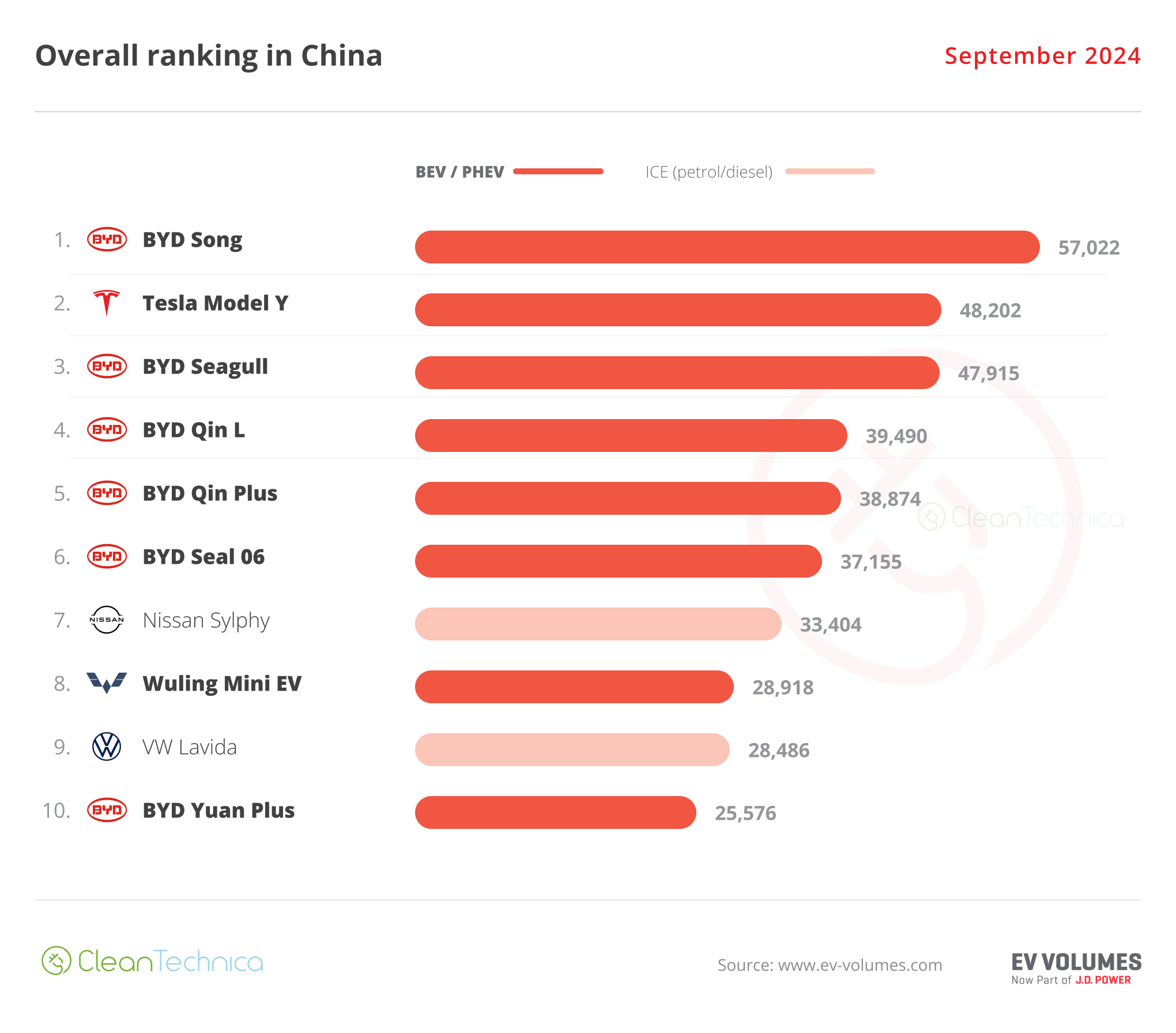Sign up for daily news updates from CleanTechnica on email. Or follow us on Google News!
A recent article at The Autopian raised an interesting point about the Kia EV9’s electric motor. Unlike most electric motors, it can change its winding configuration on the fly, effectively doing the same thing as shifting gears in an ICE vehicle. But, to explain how amazing this technology is, we need to first explain what transmissions in ICE vehicles (and some EVs) do.
Why ICE Vehicles (& Some EVs) Have Transmissions
If you know a lot about combustion engines, transmissions, rear-ends, and wheel sizes, you can probably skip this section. For everyone else, I’m going to explain in the simplest terms possible what a transmission does so that we can compare it to what Kia’s electric motor does.
In short, an ICE vehicle’s engine isn’t like an electric motor where you have instant torque available right from the get-go at zero RPM. An ICE doesn’t even work at zero RPM, and has to idle when the car stops to prevent stalling out. At really low or high RPMs, combustion engines have to work within a pretty narrow band of efficiency, often referred to as the “power band.” Think of it like pedaling a bike with only one gear ratio; you’d struggle to start moving, and once you’re moving, you’d either spin out if the gear is too low, or you’d barely move if it’s too high. An ICE that’s at too low of an RPM will struggle to keep running or get damaged.
This is where the transmission comes in. It’s like the multiple gears on your bike, allowing the engine to operate in its most efficient range while the car can go from standstill to highway speeds. By having a number of gears to choose from, the combustion engine can always be inside of the range of speeds where it’s happy and doesn’t break.
But, to get the best performance and gas mileage, ICE vehicles are starting to come with more and more gears. Modern engines do have some flexibility in terms of ideal RPM due to technologies like variable valve timing, but getting the whole symphony of pistons, rods, crank, cams, lifters, and injectors to all harmonize around the goal of making power or getting good mileage is a lot easier if you can find the right tempo.
Some have as many as ten speeds so that the engine can be not just in a happy range, but pretty close to the ideal RPM. But, with all of these extra gears comes extra parts that can break, eventually reaching the point of diminishing returns for maintenance, reliability, and cost of operation.
Some Electric Vehicles Have Transmissions, & For Similar Reasons
The average EV nerd who isn’t familiar with automotive technology will tell you that EVs don’t need a transmission. The single-speed gear reducer does the job pretty well because modern electric motors work well across a very wide range of speeds. They can work from zero RPM to well over 10,000 RPM without taking damage. Mechanically speaking, they’re really simple, and have only two moving parts (the rotor and the stator), so there isn’t a complex symphony to find the perfect tempo for.
But, an electric motor’s versatility and flexibility doesn’t mean that it’s got the same power and efficiency across its entire range of RPMs and pedal positions (torque). There are certain torque and RPM situations where an EV’s motor makes power a lot more efficiently than others, providing for better range. There are also RPMs and torque situations where the motor tends to perform better than others.
For this reason, there’s really no reason EVs can’t benefit from a transmission. Some automakers put simple 2-speed transmissions in production EVs (the Porsche Taycan is a good example), and people converting ICE vehicles to electric have often mounted an electric motor up to a manual transmission. Jeep has even built some electric vehicle prototypes with manual transmissions, which would be fun for enthusiasts.
The real reason most EVs don’t do this isn’t that it wouldn’t be good. It’s more about cost savings and keeping things simple. Automakers building EVs with multiple drive units have even managed to provide the benefits of a transmission by giving the front motor a different gear ratio than the rear one, and then having the computer “shift” between the motors to get better range in different situations. So, the need to be able to “shift” is very real, even for Tesla.
Kia’s Motor Can Shift Its Efficiency Curve Without A Transmission Or Multiple Drive Units
Kia managed to find a creative workaround for the need to shift RPMs to keep the electric motor in a speed range where it gets the most efficiency. And the company’s engineers did it without adding in any extra moving parts, like gears or additional drive units.
You should read the whole article at The Autopian if you want full details, but in short, Kia’s motor is like two motors in one. Send the power into one set of wires, and a you have a “wye” motor. Send the power into a different set of wires, and you have a “delta” motor. In short, the wye configuration tends to work better at low speeds, while the delta configuration is better for higher vehicle speeds. It means that one motor can behave like two totally different motors without the cost of an extra drive unit, extra gears, or anything else.
“Shifting” the EV9’s motor is pretty simple: the vehicle’s computer sends the power down different wires. Not only would a driver not need to think about it, they’d probably not notice at all. During my week with an EV9 press vehicle, I had no idea anything was happening to deliver better performance or range. It happens at about 45 miles per hour, with no indication, controls, or shift shock.
The added benefit is that, like the Hyundai Ioniq 5 (made by the same manufacturer), the motor can also be used to convert 400 volt charging to higher voltages to charge the vehicle faster.
This concept of shifting between different modes has been around for industrial motors for a long time, but until recently, they weren’t very cost-effective to do in EVs. By working with the right suppliers and taking advantage of lowering semiconductor costs, Kia has managed to bring the concept to the EV world and make it work even better.
Featured image by Jennifer Sensiba.
Have a tip for CleanTechnica? Want to advertise? Want to suggest a guest for our CleanTech Talk podcast? Contact us here.
Latest CleanTechnica.TV Videos
CleanTechnica uses affiliate links. See our policy here.
CleanTechnica’s Comment Policy





